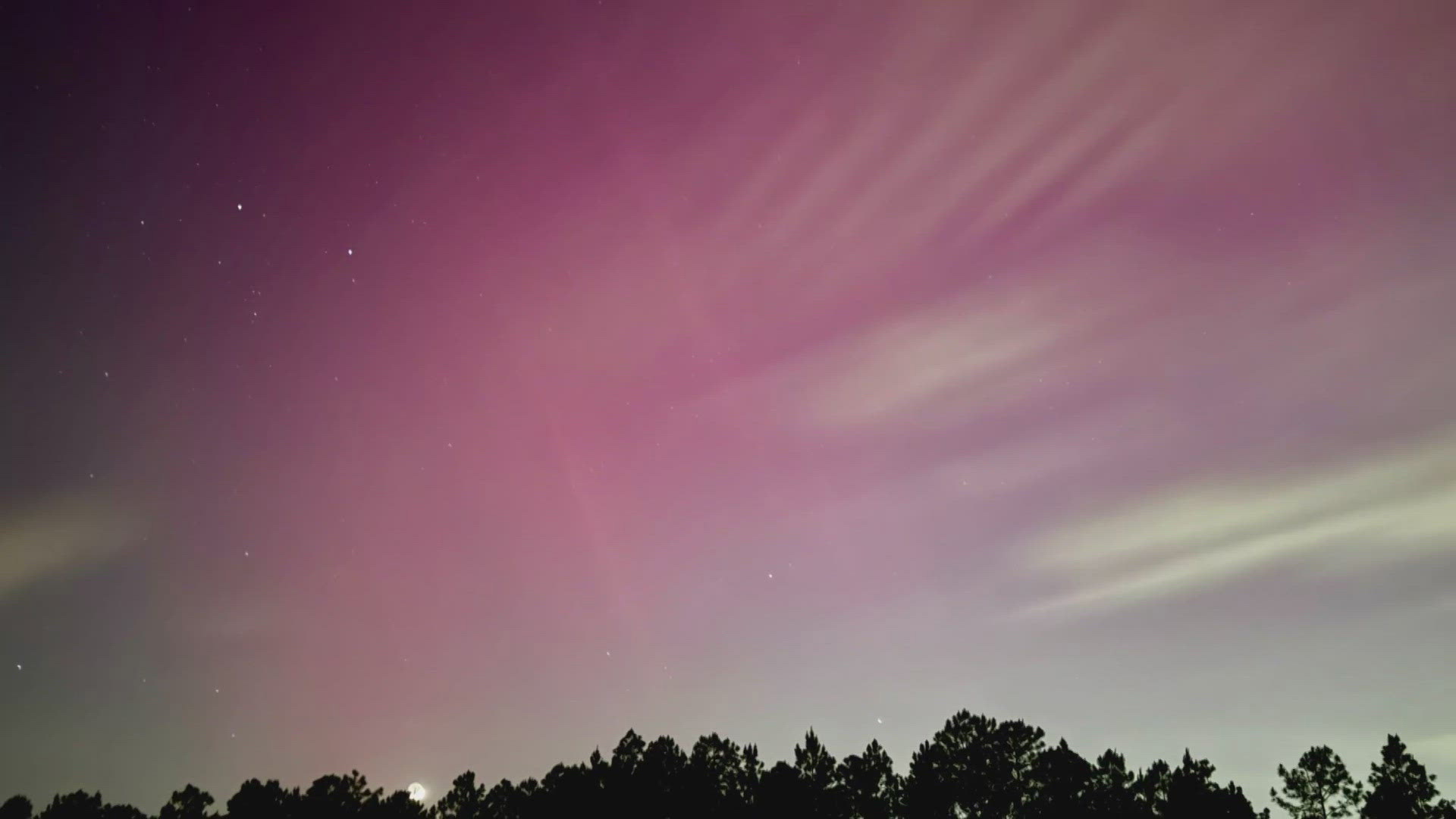JACKSONVILLE BEACH, Fla. — The rare sight of the Northern Lights in the South on Friday had many people with their eyes to the sky on Saturday.
Lots of phones at Jacksonville Beach were pointed to the sky with night mode and flash - folks using any means necessary to get a winning shot.
However, those pics generally wound up looking pretty dark, lacking the purple hue as the lights weren't nearly as visible as compared to the night before.
While the lights may already become a memory for those who saw them, a professor at the University of North Florida says they’ll have a role to play in his classroom.
“Usually when I ask my students, they just say, oh that’s beautiful, but when am I going to get to Norway to see these things," said UNF Theoretical Physics Professor Jason Haraldsen.
Haraldsen teaches a course called Discovering How Things Work. One of the topics – the Northern Lights.
When he asks his students next semester if anyone has ever seen them, he’s expecting a few more hands to go up.
“I’ll now have students that possibly have seen the auroras," said Haraldsen.
Haraldsen gave First Coast News a crash course in how the auroras work.
“The sun will eject a bunch of particles into space, and if the Earth is in the right position, it runs into those particles, and what happens is those particles get caught in the Earth’s magnetic field," said Haraldsen.
He says they typically are only visible at the poles, where magnetism is the strongest, but this particular burst created enough to stretch toward Florida.
However, Friday’s gorgeous purple hues weren’t nearly as vivid on Saturday for folks like Hildie Roberts.
“I thought it would be no light pollution, trying to see it," said Roberts. "I figured that’s North, so might keep looking that way.”
Even if Roberts can’t get the perfect shot, Haraldsen says she may still be able to see the cause of the lights, if she saved her eclipse glasses.
“Sun spots are basically black spots that form on the sun," said Haraldsen. "Because it's so large, it’s producing these massive collection of particles producing these auroras.”
Haraldsen said to bust out the eclipse glasses at some point in the next few days to see the spots on the sun.
He compared them to a scab, they’ll eventually heal, but it won’t happen overnight.

